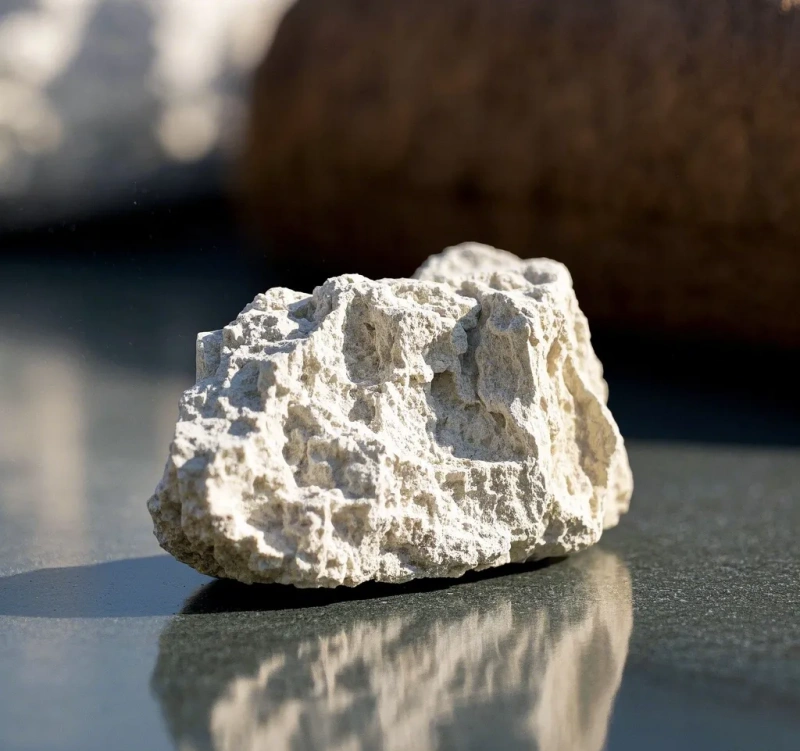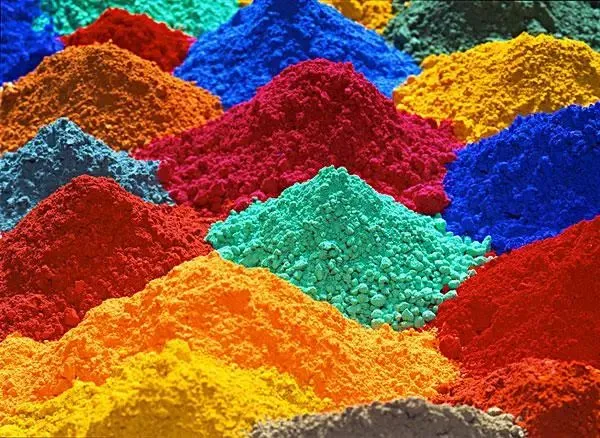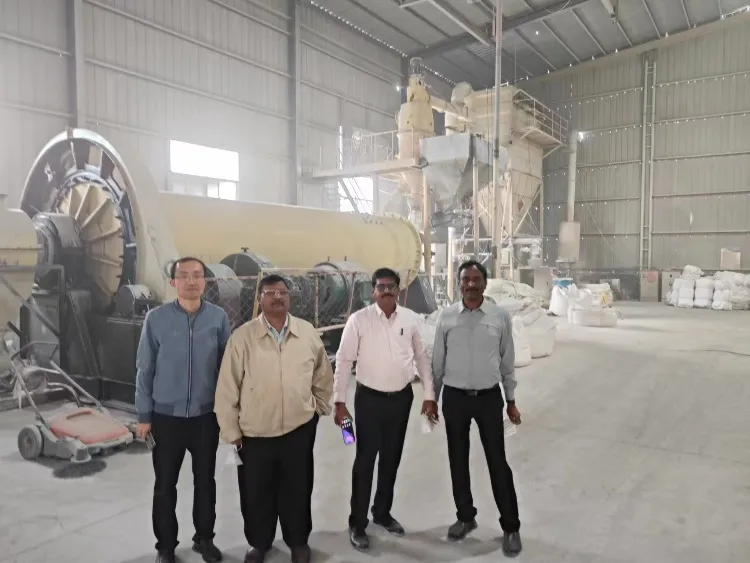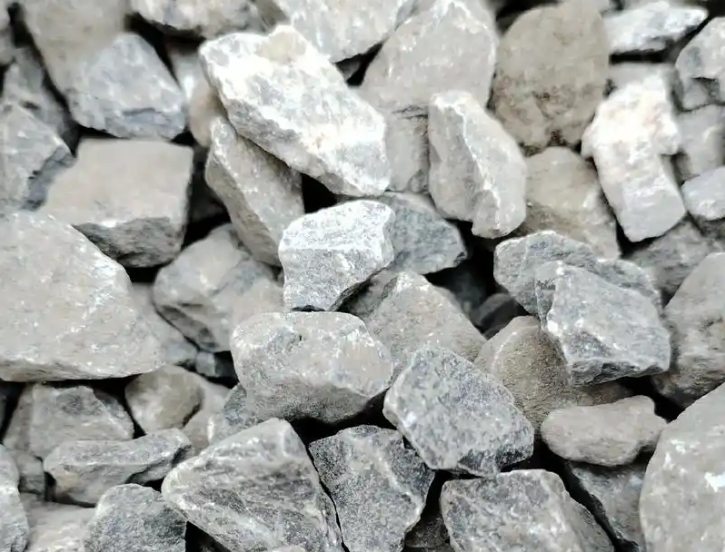Limestone is a common non-metallic mineral and a valuable resource with wide applications. Limestone is the commercial name for the mineral raw material of limestone rock. Throughout human history, limestone has been widely used due to its wide distribution and easy accessibility in nature. In modern industry, limestone is the main raw material for manufacturing cement, lime, and calcium carbide. It is an essential fluxing limestone in the metallurgy industry. High-quality limestone, after ultrafine grinding, is widely used in the production of paper, rubber, paints, coatings, pharmaceuticals, cosmetics, feed, sealants, adhesives, and polishing products. According to incomplete statistics, the ratio of limestone consumption for cement production to limestone consumption for building materials, lime production, metallurgical flux, and ultrafine calcium carbonate is 1:3. The many uses for limestone make it an indispensable material in both industrial and environmental applications.

Basic Properties
- Name: Limestone, Limestones.
- Composition: Limestone is an aggregate of minerals, primarily calcite. It commonly contains dolomite, magnesite, and other carbonate minerals, along with minerals like chalcedony, clay, pyrite, white iron ore, goethite, glauconite, organic carbon, asphalt, gypsum, anhydrite, and phosphates.
- Physical Properties: Limestone is presented in microcrystalline calcite form. The crystal shape is complex, often in a rhombohedral or rhomboid form. It appears in light gray or bluish-gray, dense blocky, granular, nodular, and porous structures.
Hardness: 3; Density: 2.6-2.9; Melting point: 825°C.
It decomposes into calcium oxide and carbon dioxide between 830-1020°C. It fizzes and dissolves when exposed to dilute acids.
Best Uses for Limestone
Cement Industry
Limestone is the main raw material for cement, accounting for 70% to 90% of the raw material composition. The other ingredients include clay-based raw materials, silicate materials, and iron-aluminum-based raw materials. By processing limestone into manufactured sand, the limestone ore yield can be effectively improved, reducing the amount of limestone waste and achieving significant energy savings and emissions reduction.

Glass Industry
Limestone is an important raw material in the production of flat glass. It mainly introduces calcium oxide into glass, increasing the chemical stability and mechanical strength of glass. The quality of limestone raw materials has a great influence on the melting of glass.

Ceramic Industry
In ceramic wall tiles, the usage of limestone ranges from 5% to 15%. In ceramic body and glaze materials, limestone mainly acts as a flux. It helps to increase the hardness and wear resistance of the glaze, enhances its corrosion resistance, reduces high temperature viscosity, and improves its gloss. Carbonate-based fluxing materials are widely used in building and sanitary ceramic products.

Plastic Industry
Calcium carbonate is the most widely used and largest volume inorganic mineral powder material. As a commonly used powder in plastics, calcium carbonate has many advantages not found in other powders. These include high whiteness, ease of surface organic treatment, light wear on processing equipment and molds, and good molding flowability. Additionally, due to its abundant resources and low cost, it has become the preferred inorganic mineral powder material in the plastic processing industry.
Rubber Industry
For rubber, calcium carbonate is the third-largest reinforcing filler after carbon black and white carbon black. It is non-toxic, low-cost, and offers excellent reinforcing effects.

Coatings Industry
Heavy calcium carbonate is the primary filler in the global coatings industry. It is not only cost-effective, significantly reducing coating production costs, but also serves as a functional filler. It can impact many coating properties, such as altering the mechanical strength of the film, improving water resistance, and enhancing anti-powdering properties. Due to its role as a high-quality, affordable functional filler, calcium carbonate has remained one of the most important basic materials in both consumer and industrial coatings.

Paper Industry
Calcium carbonate is one of the main inorganic chemical raw materials in the paper industry. Calcium carbonate used as paper filler and coating pigment can be categorized into two types: One is natural calcium carbonate (GL) made from ground limestone, and the other is synthetic precipitated calcium carbonate (PCC) produced by chemical precipitation. The purpose of adding fillers in paper production is to improve opacity and brightness, enhance smoothness and uniformity, increase softness, and reduce moisture absorption and deformation. For printing paper, adding fillers improves ink absorption and printability. Increasing the amount of filler also helps to reduce paper costs.

Food Industry
Pure mineral calcium carbonate is processed to remove harmful substances, such as heavy metal ions, to create purer calcium carbonate for use as a food additive. Calcium carbonate in food can serve as an additive, supplement, curing agent, anti-caking agent, yeast sugar aid, calcium supplement, and modifier. Some foods may appear dark or black, affecting the desired visual effect, and adding calcium carbonate can help whiten them, enhancing the visual appeal and meeting consumer expectations. Calcium carbonate can also act as a leavening agent and fermentation aid in some foods, reducing fermentation time.
Pharmaceutical Industry
In the prevention and treatment of osteoporosis and related diseases, calcium carbonate is widely used due to its high calcium content, low cost, lack of side effects, and excellent cost-effectiveness. Although there are several calcium salts available as calcium supplements, calcium carbonate is the most widely used, with the highest calcium content, good effectiveness, and low price, making it the best calcium supplement.
Other uses for limestone
Calcium carbonate is used as an abrasive in toothpaste and as an additive in animal feed. It is also used in printing inks, putty, sealing wax, and adhesives, primarily serving as a filler to increase volume and reduce costs.
Conclusion
In conclusion, limestone’s versatility makes it an indispensable resource across various industries. From cement production and being a key filler in plastics, paints, and coatings, to its critical role in water treatment, limestone’s abundance, low cost, and essential properties make it a highly valuable material. Additionally, the uses for limestone extend to sectors such as agriculture, where it is used as a soil conditioner, and in the production of pharmaceuticals, rubber, and adhesives. As technology advances, the efficient utilization of limestone continues to fuel innovation in construction, manufacturing, environmental applications, and beyond.
Epic Powder

Epic Powder, 20+ years of work experience in the ultrafine powder industry. Actively promote the future development of ultra-fine powder, focusing on crushing,grinding,classifying and modification process of ultra-fine powder. Contact us for a free consultation and customized solutions! Our expert team is dedicated to providing high-quality products and services to maximize the value of your powder processing. Epic Powder—Your Trusted Powder Processing Expert !
